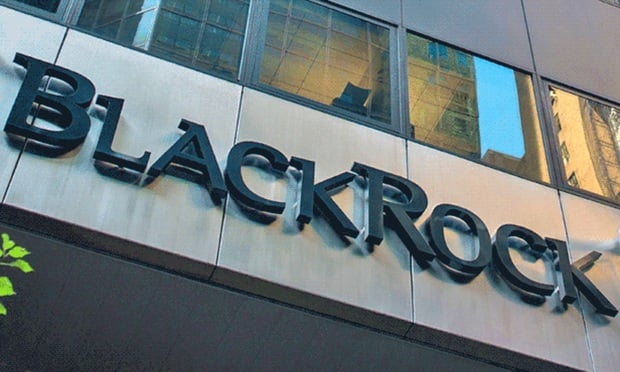Advertisement


1. Assess your retirement readiness in a down market: Whether you're 5 years, 10 years or 2 years away from retirement, knowing how you fare in a down market can give you peace of mind. The S&P 500 is down around 12% from its peak. Near retirees often think they'll need to revise their plan given the drop. Often, that's not true. Most retirement plans assume the market will have ups and downs. Accordingly, we encourage anyone 15 or less years from retirement to conduct a quick 'on-track', 'off track' retirement analysis with their 401(k) or IRA vendor. If you're 'on track' in a down market, you can relieve unnecessary stress. If you're 'off track', you can focus on taking action to address the gap. Either way, knowing where you stand can put you back in control. __ Alok Deshpande, financial advisor and CEO of SmartPath

2. Check your HSA balance: Often, employees forget or lose track of their HSA accounts. Employees with high deductible health care plans contribute to these medical savings accounts to use pre-tax dollars for medical costs. Still, the funds are often overlooked when needed because it's simply not an account that's reviewed frequently. __ Alok Deshpande, financial advisor and CEO of SmartPath

3. Diversification is key: Spreading out a client’s portfolio among stocks, bonds, and cash equivalents, can lower risk since not all parts of the market move in the same direction at the same time. When you diversify, your money isn’t all going in one direction. A diverse portfolio may include stocks, bonds, and cash equivalents, as well as higher-risk real estate investment trusts or commodities. __ Rob Baumgarten, Vice President of Retirement Plan Sales at The Standard
Advertisement

4. Don’t make a rash decision: For investors who are a good number of years away from retirement, this simple step could have a huge impact on your savings -- don't make a rash decision to sell your stock holdings if you can avoid it. Cashing out of a declining market comes with a price -- while you may avoid immediate loss, you potentially miss out on future gains. So, if investors stay patient, and can absorb some volatility, the market's long-term tendency to recover from declines can eventually work in their favor. __ Roger Young, CFP, senior financial planner

5. Focus on the long-term: Even though sudden ups and downs in the market can be alarming, the most important way to protect your clients is by encouraging them to stick to their investment plan. Market swings are temporary, but ensuring their retirement plan is the lasting goal. Long-term investing gives you more time for potential growth and for absorbing the ups and downs of the markets. __ Rob Baumgarten, Vice President of Retirement Plan Sales at The Standard

6. Follow the 10/70/20 rule with your stimulus check (or tax return): Many families have received a stimulus check as part of the CARES Act. The next immediate question is, "What's the smart way to use these funds?" We recommend the 10/70/20 rule. Spend 10%. Enjoy it. Then, use 70% to fund your next goal such as building an emergency fund or paying down debt. And last, set aside 20% as a reward to yourself when you achieve that next goal. This approach balances the desire to spend today while making progress towards a better tomorrow. __ Alok Deshpande, financial advisor and CEO of SmartPath

7. Freeze your credit (if you're not using it): The pandemic, and more specifically 'shelter in place' orders, has created more opportunities for cyberattacks. Freezing your credit with all three credit bureaus can limit your exposure. If you're not applying for credit in the near term, consider this option and reduce your financial stress.__ Alok Deshpande, financial advisor and CEO of SmartPath

8. Stick to the plan: Every investment plan is built around major life goals, a retirement date, and a client’s tolerance for risk. Stay on track during any market swings by sticking to the important decisions your clients have made. __ Rob Baumgarten, Vice President of Retirement Plan Sales at The Standard
Advertisement


1. Assess your retirement readiness in a down market: Whether you're 5 years, 10 years or 2 years away from retirement, knowing how you fare in a down market can give you peace of mind. The S&P 500 is down around 12% from its peak. Near retirees often think they'll need to revise their plan given the drop. Often, that's not true. Most retirement plans assume the market will have ups and downs. Accordingly, we encourage anyone 15 or less years from retirement to conduct a quick 'on-track', 'off track' retirement analysis with their 401(k) or IRA vendor. If you're 'on track' in a down market, you can relieve unnecessary stress. If you're 'off track', you can focus on taking action to address the gap. Either way, knowing where you stand can put you back in control. __ Alok Deshpande, financial advisor and CEO of SmartPath

2. Check your HSA balance: Often, employees forget or lose track of their HSA accounts. Employees with high deductible health care plans contribute to these medical savings accounts to use pre-tax dollars for medical costs. Still, the funds are often overlooked when needed because it's simply not an account that's reviewed frequently. __ Alok Deshpande, financial advisor and CEO of SmartPath

3. Diversification is key: Spreading out a client’s portfolio among stocks, bonds, and cash equivalents, can lower risk since not all parts of the market move in the same direction at the same time. When you diversify, your money isn’t all going in one direction. A diverse portfolio may include stocks, bonds, and cash equivalents, as well as higher-risk real estate investment trusts or commodities. __ Rob Baumgarten, Vice President of Retirement Plan Sales at The Standard
Advertisement

4. Don’t make a rash decision: For investors who are a good number of years away from retirement, this simple step could have a huge impact on your savings -- don't make a rash decision to sell your stock holdings if you can avoid it. Cashing out of a declining market comes with a price -- while you may avoid immediate loss, you potentially miss out on future gains. So, if investors stay patient, and can absorb some volatility, the market's long-term tendency to recover from declines can eventually work in their favor. __ Roger Young, CFP, senior financial planner

5. Focus on the long-term: Even though sudden ups and downs in the market can be alarming, the most important way to protect your clients is by encouraging them to stick to their investment plan. Market swings are temporary, but ensuring their retirement plan is the lasting goal. Long-term investing gives you more time for potential growth and for absorbing the ups and downs of the markets. __ Rob Baumgarten, Vice President of Retirement Plan Sales at The Standard

6. Follow the 10/70/20 rule with your stimulus check (or tax return): Many families have received a stimulus check as part of the CARES Act. The next immediate question is, "What's the smart way to use these funds?" We recommend the 10/70/20 rule. Spend 10%. Enjoy it. Then, use 70% to fund your next goal such as building an emergency fund or paying down debt. And last, set aside 20% as a reward to yourself when you achieve that next goal. This approach balances the desire to spend today while making progress towards a better tomorrow. __ Alok Deshpande, financial advisor and CEO of SmartPath

7. Freeze your credit (if you're not using it): The pandemic, and more specifically 'shelter in place' orders, has created more opportunities for cyberattacks. Freezing your credit with all three credit bureaus can limit your exposure. If you're not applying for credit in the near term, consider this option and reduce your financial stress.__ Alok Deshpande, financial advisor and CEO of SmartPath

8. Stick to the plan: Every investment plan is built around major life goals, a retirement date, and a client’s tolerance for risk. Stay on track during any market swings by sticking to the important decisions your clients have made. __ Rob Baumgarten, Vice President of Retirement Plan Sales at The Standard
Advertisement
© Touchpoint Markets, All Rights Reserved. Request academic re-use from www.copyright.com. All other uses, submit a request to [email protected]. For more inforrmation visit Asset & Logo Licensing.







